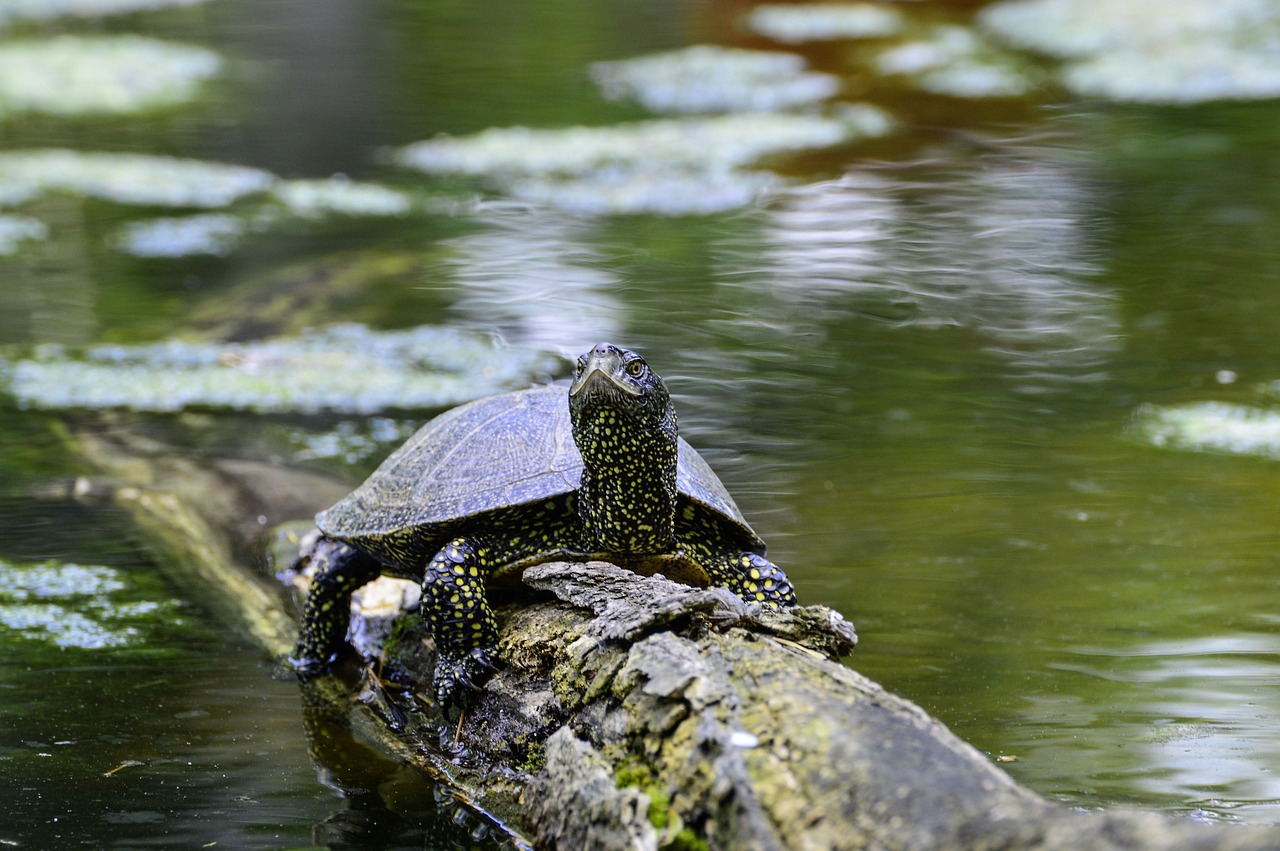The European pond turtle (Emys orbicularis) is a freshwater turtle species found across much of Europe and parts of Asia. Despite its wide distribution, the species has experienced significant population declines over the last century due to various anthropogenic activities, including habitat loss, fragmentation, and degradation, as well as overexploitation for food and the pet trade. In addition, climate change and the introduction of non-native species are additional threats to the species.
Habitat loss and degradation have been the primary drivers of population declines for the European pond turtle. The species requires a variety of aquatic and terrestrial habitats, including ponds, wetlands, streams, and riparian areas, to complete its life cycle. However, many of these habitats have been drained, polluted, or converted for agriculture, urban development, or other land uses, leading to a decline in suitable habitat for the species.
Overexploitation for food and the pet trade has also been a significant threat to the European pond turtle. In many parts of its range, the species is hunted for its meat and eggs, which are considered delicacies in some cultures. In addition, the species has been popular in the pet trade due to its attractive appearance and relatively small size. However, the capture and trade of wild turtles can have significant impacts on wild populations, especially when combined with other threats such as habitat loss and degradation.
Climate change is another threat to the European pond turtle, as rising temperatures can affect the species’ ability to regulate its body temperature and alter the timing and success of reproduction. In addition, the introduction of non-native species, such as American red-eared sliders (Trachemys scripta elegans) and signal crayfish (Pacifastacus leniusculus), can compete with the European pond turtle for resources and spread diseases that can be fatal to the species.
Despite these threats, there is hope for the recovery of the European pond turtle. Conservation efforts, including habitat restoration and protection, captive breeding, and reintroduction programs, have been initiated in many parts of the species’ range. These efforts aim to address the various threats facing the species and promote its recovery.
Habitat restoration and protection are crucial for the conservation of the European pond turtle. Restoring and protecting wetland and riparian habitats can provide suitable breeding and foraging habitat for the species, as well as protect it from threats such as pollution and invasive species. In addition, the creation of artificial nesting sites, such as egg-laying sites or basking sites, can also help promote the species’ recovery.
Captive breeding and reintroduction programs are also important conservation tools for the European pond turtle. These programs involve breeding turtles in captivity and releasing them into the wild to supplement or establish wild populations. Captive breeding can help ensure the genetic diversity of the species and provide individuals for release into the wild. Reintroduction programs can also help establish new populations in areas where the species has been extirpated or where populations are critically low.
Conservation education and public awareness are also essential for the conservation of the European pond turtle. Many people are unaware of the threats facing the species and the importance of conserving its habitat. Conservation education programs can help raise awareness of the species and its conservation needs, as well as promote sustainable practices that benefit the species and its habitat.
In some parts of its range, conservation efforts have already shown promising results for the European pond turtle. For example, in France, conservation efforts have led to population increases and range expansions for the species. In addition, reintroduction programs in Spain and Portugal have established new populations in areas where the species was previously extirpated. These successes demonstrate that conservation efforts can make a difference for the species and provide hope for its recovery.
So, the European pond turtle is a freshwater turtle species that has experienced significant population declines across much of its range due to various anthropogenic activities, including habitat loss, overexploitation, climate change, and the introduction of non-native species. However, conservation efforts, including habitat restoration and protection, captive breeding and reintroduction programs, and conservation education, have been initiated in many parts of its range, providing hope for the species’ recovery.
However, there are still several challenges to the recovery of the European pond turtle. One of the most significant challenges is the lack of consistent monitoring and data on population trends and distribution. Without accurate data, it is difficult to assess the effectiveness of conservation measures and adapt management strategies accordingly.
In addition, the European pond turtle faces several ongoing threats that require continued attention and management, such as habitat loss and degradation, overexploitation, and the introduction of non-native species. Climate change is also an emerging threat that could have significant impacts on the species’ population dynamics and distribution.
Furthermore, conservation efforts must take into account the ecological needs of the species and its role in freshwater ecosystems. The European pond turtle plays an important role in maintaining the balance of these ecosystems, and its decline could have significant ecological consequences.
